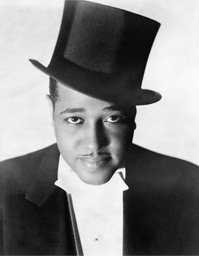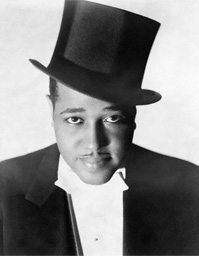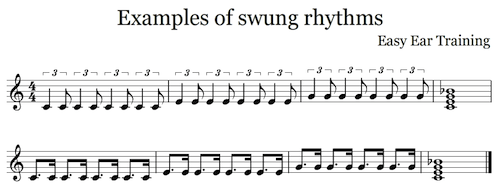
What if Axl and Slash had hung out with Fats Domino? Or Metallica met Miles Davis? A new music processor called The Swinger is looking to find out, by adding a swing to any song you throw at it. Get ready to hear those classics in a whole new way – and as the Duke once put it: “It don’t mean a thing if it ain’t got that swing!”
Music Hack Day
At the cutting edge of digital music research, young developers get together periodically for a ‘Music Hack Day‘ – an intense 24 hour hackathon to create a new, cool music technology project, and show it off to everyone. There are always some incredible and fascinating demos which emerge, and last week’s hack day in San Francisco was no exception.
This blog post over at the Yahoo! Developer Network Blog gives a great overview of several of the projects. One which stood out for me was The Swinger – simple concept, fantastic demonstration of how far music tech has come in the last 10 years, and a wonderful way to illustrate the concept of swung beats to all you ear trainers out there!
First a quick reminder of what it means to have that swing…
What’s a “swung beat”?
The basic rules of rhythm say that a sequence of the same kind of note (e.g. quarter, eighth, crotchet, quaver) will each have the same duration, creating a steady beat. For a march, the quarter notes are used to coincide with footsteps, so it’s essential they stay regular!
Here’s an example of this normal, steady beat, using eighth notes:
Handy for marching, but the early jazz musicians decided that the regular beat was just too straight, and they livened it up by ‘swinging’ it: pairing up notes, and ‘stealing’ some time from the second note to add to the first, creating a ‘long/short, long/short, long/short…’ rhythm:
Often you will just find that simple text instruction, to ‘swing’ the beat: “Swung”, “With a slight swing”, “Slow swing”, “Medium swing”. It’s up to you and your ear to know how to change the rhythm accordingly!
If a composer wants to be more precise about it, they could actually spell out the rhythm they wanted. Here are a couple of examples:
The first example is a slight swing using triplets, the second quite a heavy swing using ‘dotted’ notes. It’s important to understand that these are the kind of rhythms which actually underlie the instinctive ‘swing’ beat. This lets you connect what you hear with the theory, and traditional music notation.
The Swinger
Now you know all about swung beats, let’s bring it to life and have a bit of fun!
‘The Swinger’ is a Music Hack Day project by Tristan Jehan. Tristan’s one of the founders of The Echo Nest, which powers all sorts of interesting new music apps. The Swinger’s aim is to bring that swing to every song out there – instantly creating swung versions of classics you know and love. Here are a couple to whet your appetite:
The Police – Every Breath You Take
Every Breath You Take (swing version) by TeeJay
Journey – Don’t Stop Believin’
Don’t Stop Believin’ (Swing Version) by plamere
There are many more over at Paul Lamere’s blog post on The Swinger.
There’s nothing quite like using a well-known example to bring a concept to life! If you weren’t sure about swinging before, hopefully listening to these tracks gives you that intuitive understanding you’ll need to bring it into your playing.
Okay, I can’t resist – one more to play us out….
Guns N’ Roses – Sweet Child O’ Mine
Sweet Child O’ Mine (Swing Version) by plamere
What songs do you think could benefit from a bit of swing? Post your suggestions in the comments below.
We’ve started using the Noteflight notation system – click through on the images above to see the real, interactive versions of the scores. Let us know what you think!










